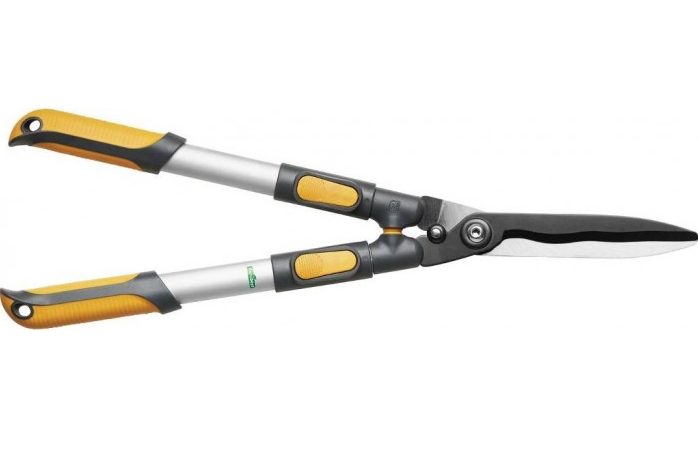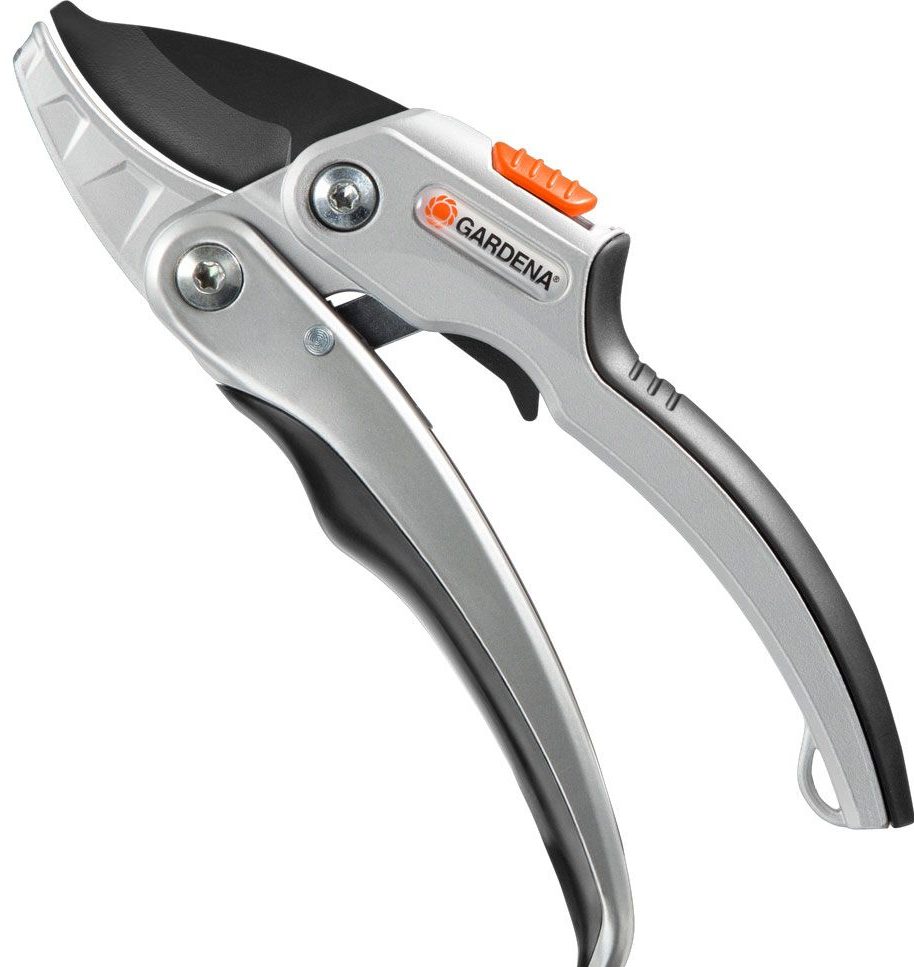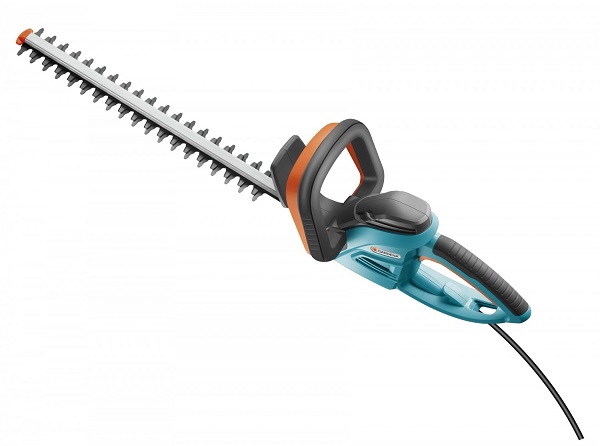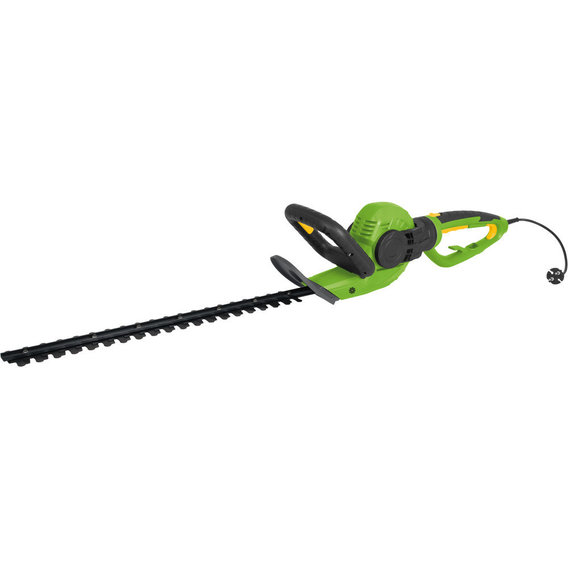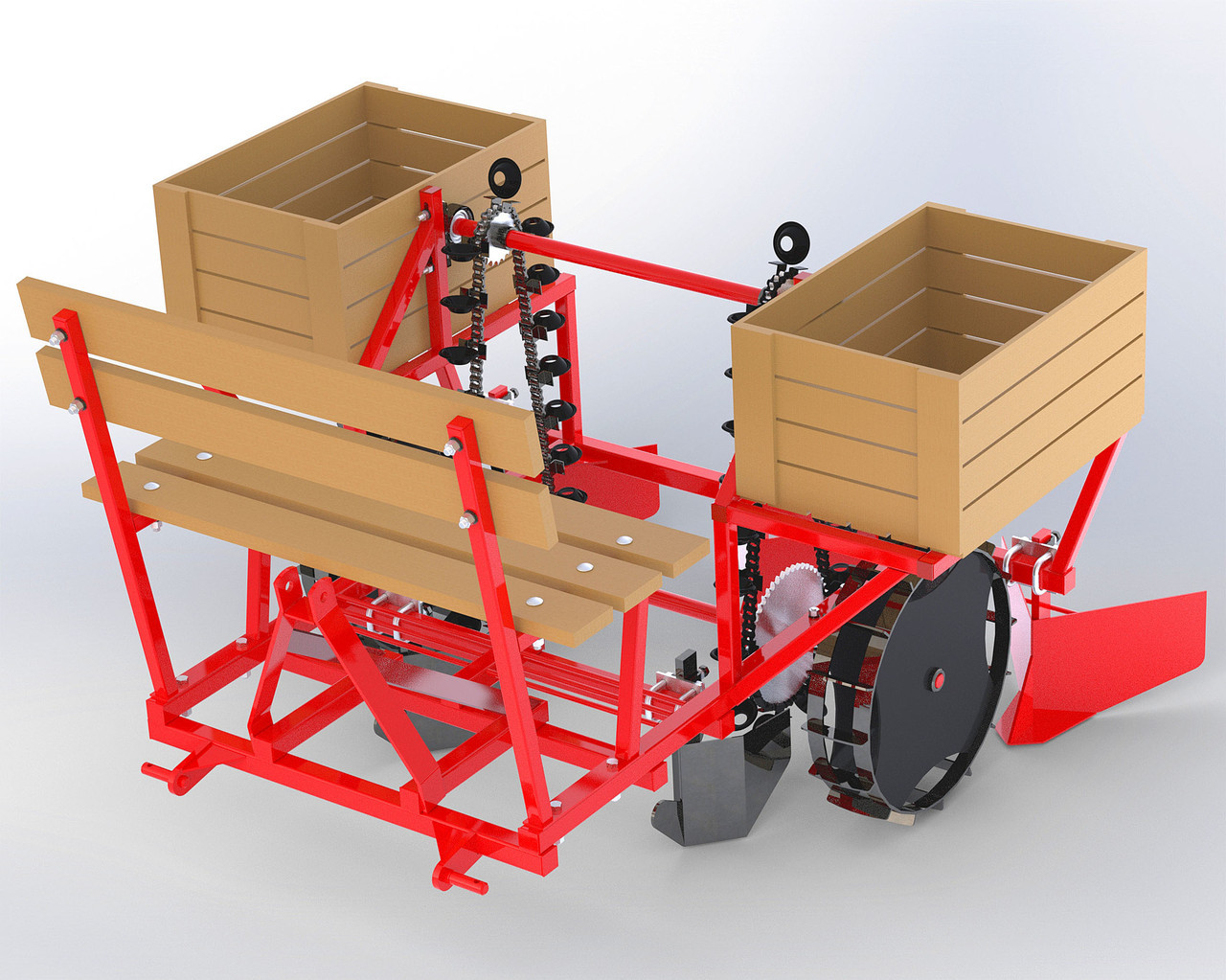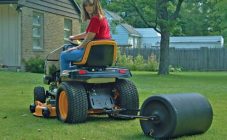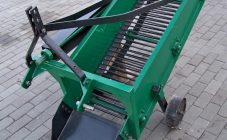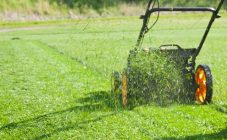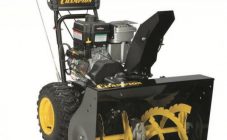Content:
- Description of the device of the manual brush cutter
- Types of manual brush cutters
- Main technical characteristics of manual brush cutters
- Advantages and disadvantages of manual brush cutters
- Popular brands of handheld hedge trimmers
- How to choose a manual brush cutter
- Care and storage of the manual brush cutter
It is impossible to beautifully arrange a hedge or give a spectacular shape to decorative trees without a special tool. Cutting with pruners one branch at a time is a long and laborious task. It is difficult to get an even cut, so a brush cutter must be used.
Description of the device of the manual brush cutter
The tool looks like an improved pruner, only the knives are much longer and the handles are more extended. Such a device makes it possible to spend less physical effort during work. It looks like a large scissor, the cutting part of which is one quarter of the length of the entire tool. Sometimes they call him that - garden shears. They are convenient for working on low hedges and thin branches. When processing tall bushes, when you have to stretch your arms up, they are inconvenient to work. It takes too much effort to trim thick branches.
Types of manual brush cutters
If the area is small and the hedge is not high, choose mechanical hand hedge trimmers. The main requirements for the tool are that they must be comfortable to hold in the hands, the blades of the scissors must be sharp and made of good steel. The shops offer the following types:
- Simple garden shears. They are lightweight and comfortable to hold. Blades can be straight and wavy. Small young branches are cut with such a tool.
- Manual brush cutter with retractable telescopic handles. Good for tall shrubs and tree crown pruning.
- Fiskars rotary brush cutter. The adjustable boom angle allows you to trim very low curbs with almost no bending over. It can be customized according to your height. The blades rotate 90 °. The tool is very manoeuvrable. At the bottom it has a special support for cutting with the entire plane of the blade. Equipped with a lock for locking the scissors.
- With ratchet mechanism for increased pressure. Such a tool is intended for pruning large trees.
- Tools with adjustable gap between the blade planes, shock-absorbing stops and self-opening mechanism. It is a lightweight and convenient tool that is designed for light workloads. Suitable for female hands.
Main technical characteristics of manual brush cutters
The scissor blades should be made of high-strength steel, have high-quality sharpening and a Teflon coating that protects the working surface from sticking of leaves and small branches. The length of the blade should be at least 25 cm. The presence of teeth increases the power by 2 times.
The profile of the edges is straight and wavy. A straight edged tool will freely cut branches no more than 15 mm. A hedge trimmer with wavy edges is used to trim thinner branches: vines, junipers.
The tool is one-sided cutting, when the sharp edge of the working blade moves along the reference. It is convenient for them to trim plants with soft leaves, such as ivy or hops, and double-sided, when both blades are working.
Thus, the characteristics that must be paid attention to when choosing are ease of use, cutting power, weight, quality of the blade metal and the duration of the warranty. Price matters too.
Advantages and disadvantages of manual brush cutters
A manual brush cutter must be on the farm of the summer resident. They can work at any time, regardless of the weather. Does not require charging with electricity or refueling with gasoline. The advantages of a mechanical brush cutter:
- low cost and no costs for electricity or the purchase of gasoline and consumables;
- little weight;
- compactness, does not take up much space during storage;
- lack of noise, you can work at any time of the day;
- reliability - difficult to break and easy to repair.
Disadvantages:
- requires the use of great physical force;
- it is impossible to perform a large amount of trimming due to fatigue, which means that the time spent on trimming increases;
- It is difficult to cut tall bushes and hedges without using a ladder;
- bushes with thick branches cannot be processed.
Popular brands of handheld hedge trimmers
The most famous companies that produce such instruments are Rago, Grinda, Gardena. They make a lot of tools to make the job easier. The models from these manufacturers have a good design, they are compact, easy to use and made of good quality materials.
It is not difficult to choose the right tool among the large assortment. It is worth taking a closer look, for example, at the universal tool already described above - the Fiskars brush cutter. The brush cutter of Russian development Rostok 423555 has also proven itself well among summer residents. Sharp blades made of alloy steel allow you to get a perfectly smooth and even cut, which is especially appreciated by gardeners when pruning and grafting.
How to choose a manual brush cutter
When choosing, you should pay attention:
- Are the handles comfortable and the tool weight balanced?
- for steel strength and blade sharpening quality;
- the presence of a protective coating against sticking;
- whether there is a toothed part that allows you to increase / distribute the power of the mechanical force;
- dimensions and weight.
Tool selection criteria
The tool should be lightweight, easy to use, reliable and durable. In addition to the above, you need to consider:
- what front of work is to be done: trimming hedges, pruning bushes or grafting;
- type, size and thickness of the cut branches;
- how often you will have to work with the tool;
- the material from which it is made, the presence of devices for ease of use;
- who will work.
Care and storage of the manual brush cutter
After the end of the summer season, it is important not only to clean the area, but also to prepare the inventory for storage in the winter. Only proper care ensures durability and avoids unnecessary hassle and costs in the spring. Before winter:
- check the brush cutter for damage and repair;
- clean from dirt and rust;
- sharpen after completion of work;
- store in the open position with the working side up so that the spring is not compressed;
- hang on the wall or put in a box, previously wrapped in oiled paper, or put in special covers.
If you need more productive hand-held machines for work, you can buy a cordless brush cutter, for example, from Bosch, electric or gasoline, or a special trimmer attachment.
In any case, no matter what model the gardener chooses, the hedgecutter will be an excellent assistant. Having tried to work with them once, you no longer want to pick up a pruner!
